IC 2948 is a young open star cluster in the southern constellation Centaurus. It was discovered by astronomer A. David Thackeray in 1950 through his observation of the cluster’s Bok globules, now known as Thackeray’s Globules. IC 2948 is associated with the emission nebula IC 2944, also known as the Running Chicken Nebula or the Lambda (λ) Centauri Nebula, and is located 6,500 light years away from Earth.
In a recent study, Krelowski et al (2017) determined that the majority of objects in IC 2944 are obscured by clouds, causing neutral (“gray”) extinction, making them appear dimmer as if they were farther away, ultimately leading to discrepancies in distance measurements.
In order to study IC 2948 and investigate the relationships between the colours, brightnesses, and the age and chemical composition of the cluster as a whole, I collected 15 images using the Skynet Robotic Telescope Network’s Prompt6 telescope, located in Cerro Tololo Inter-American Observatory, Chile. Prompt6 has an aperture of 0.4m, a focal length of 7016.0 m, a focal ratio of 17.3, a CCD size of 13 um pixels, and a field of view of 13.5 by 13.5 arcminutes.
A total of 15 images of IC 2948 were taken with 70.87, 47.24, and 35.43 second durations in B, V, and R filters respectively, and were processed afterwards using Skynet’s image processing tool, Afterglow to obtain the stacked images shown in Figure 1 which I combined and calibrated and to create the apparent colour image in Figure 2 below. I also used Skynet’s star cluster data analysis tool, Cluster Astromancer to obtain the results shown in Table 1 below, which were submitted to Skynet’s Astronomicon catalogue. The plots for the Gaia data using these results are shown in Figure 3.
 |
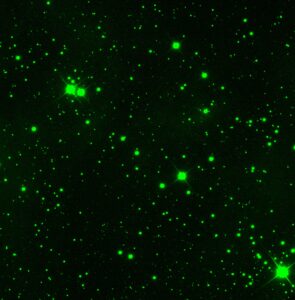 |
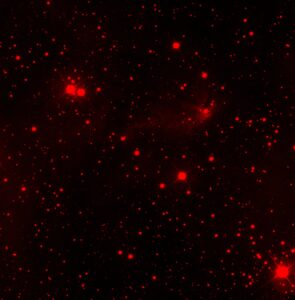 |
Figure 1: Colour-mapped B, V, and R stacked images obtained in Afterglow.

Figure 2: Apparent colour image of IC 2948.
Table 1: Summary of Results for IC 2948
| Distance | Proper Motion in RA | Proper Motion in Dec | Log(Age) | Age | Metallicity | E(B-V) |
| 1.95 (kpc) | -6.02 (mas/yr) | 0.63 (mas/yr) | 6.75 log(yrs) | 5.62 (Myrs) | 0 (solar) | 0.46 (mag) |
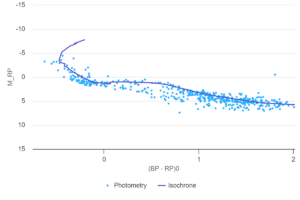 |
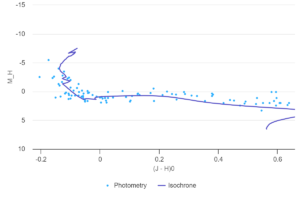 |
Figure 3: Plotted Gaia data using results from the Cluster Astromancer analysis.
The E(B-V) value from my Cluster Astromancer analysis is the extinction value, which I used while calibrating the apparent colour image of IC 2948 to obtain the de-reddened colour image shown in Figure 4 below.
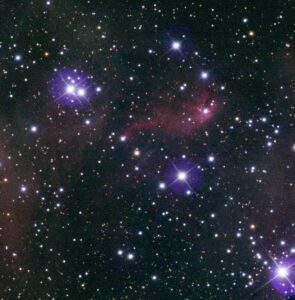
Figure 4: De-reddened colour image of IC 2948.
This analysis was performed primarily to complete a lab for the course titled, “Astronomy 113: Introduction to Stellar Astronomy,” taught at the University of Saskatchewan. Among a selection of many clusters, I chose IC 2948 because of this unique association that makes it stand out and allows for beautiful images to be captured. While I worked on the lab and studied this star cluster, I learned how to group and colour map images to obtain a combined colour image. I also learned how to use Cluster Astromancer to remove field stars, fetch data from archives, and fit isochrone models to obtain estimates of the physical properties of all stars in a cluster, such as distance, age, chemical composition, and the amount of light that has been obscured by dust.
Because I chose a star cluster that was associated with a nebula, it was a bit difficult to see smaller individual cluster stars in the images I took and processed in Afterglow. I also had a bit of trouble removing field stars after fetching data from all archives in Cluster Astromancer, which resulted in a slightly higher score in Astronomicon.
IC 2948 was studied by Kharchenko et al (2013), who found parameters shown in Table 2 below. The plots for the Gaia data using these parameters are shown in Figure 5. When compared to my results, the differences are quite subtle, but I believe my parameters are more appropriate due to them being slightly higher and fitting the Gaia data better overall.
Table 2: Parameters from Kharchenko et al (2013)
| Distance | Log(Age) | Metallicity | E(B-V) |
| 2.796 (kpc) | 6.6 log(yrs) | 0 (solar) | 0.521( mag) |
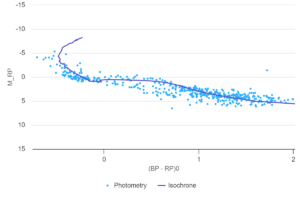 |
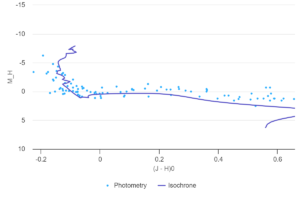 |
Figure 5: Plotted Gaia Data using Parameters from Kharchenko et al (2013)
Having completed my analysis, I am quite proud of the work I have done. As I progressed through the lab, I began to understand how each step and process worked and found the experience to be quite enjoyable, especially because I was able to utilize robotic telescopes and an image-processing software to obtain a beautiful image of a unique star cluster. It is also interesting how we can use technology to observe and study objects in space thousands of light-years away. It is truly an exciting time to be an astronomer, and I am excited to see the advancements to come in future years. If something interesting about IC 2948 is found later on during my lifetime, I would be able to tell others about how I studied it in my first year of post-secondary education. 🙂